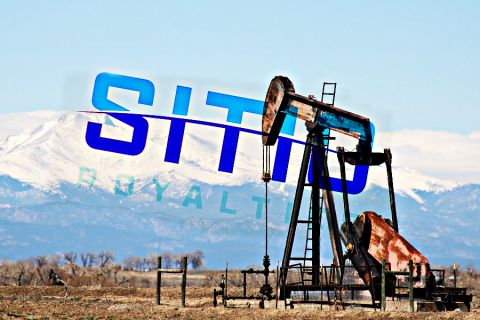Exploration editor Peggy Williams began researching activity in East Texas' Bossier play several months ago, as rumors of huge discoveries began to surface. She found a cover story. "Five years ago, Freestone, Leon and Robertson counties were awash in land-brokers, seismic crews and high hopes. People believed that 3-D seismic was the key to finding the wildly prolific Cotton Valley pinnacle reefs, and a mad scramble was on to tap their riches," she writes. That didn't work out "but something quite different was percolating in almost exactly the same area." That would be the Bossier. Anadarko Petroleum Corp. saw recently that the play had considerable infill potential but development was barely economical while gas was $2 per thousand cubic feet. The Houston-based company made its wells work out at that price, nevertheless. Meanwhile, the spot price for gas is better than $4.50, making the Bossier economical for most producers. "Once just a marginal bailout zone, the Bossier is now the star attraction in East Texas," Williams writes. See "Bossier," this month's cover feature. Next, a star in Bridgeport, West Virginia, Petroleum Development Corp. spent the 1980s bailing out of debt. Since then, it has produced only earnings. See "An Earnings Machine." Another regular producer of profit, Lafayette, Louisiana-based Stone Energy Inc. plans to develop earnings out of Denver-based Basin Exploration Inc.'s prospects. See "Making a Bigger Splash," by contributing editor Jodi Wetuski. In "Small Companies, Big Plans," Wetuski talks to four other independents-Callon Petroleum Co., EEX Corp., Mariner Energy Inc. and Spinnaker Exploration Co.-about their trials and tribulations in the deepwater Gulf of Mexico, an area that has been the playground of only the majors. Of course, access to capital is one of the issues facing these relatively small-cap deepwater players. In "Street Squeeze," senior financial editor Brian A. Toal takes a look at whether Wall Street consolidation has created fewer financing opportunities to producers and if at higher costs. Meanwhile, the mix of institutional investors in energy stocks has changed during the past few years, as well. Guest authors Tate Sullivan and Ian Synnott explain in "Following the Money." And, changing how U.S.-based energy companies communicate with these and all other investors are new disclosure rules from the Securities and Exchange Commission. Guest author Roger K. Harris reviews publicly traded companies' new obligations and rights in "Know Your Reg FD." Next month, you will receive Oil and Gas Investor's 20th anniversary special edition, a look at the past and a peek at the future. If what is past is prologue, the oil industry is in for a just-as-interesting next 20 years. Stay tuned. -Nissa Darbonne, Managing Editor
Recommended Reading
Deep Well Services, CNX Launch JV AutoSep Technologies
2024-04-25 - AutoSep Technologies, a joint venture between Deep Well Services and CNX Resources, will provide automated conventional flowback operations to the oil and gas industry.
EQT Sees Clear Path to $5B in Potential Divestments
2024-04-24 - EQT Corp. executives said that an April deal with Equinor has been a catalyst for talks with potential buyers as the company looks to shed debt for its Equitrans Midstream acquisition.
Matador Hoards Dry Powder for Potential M&A, Adds Delaware Acreage
2024-04-24 - Delaware-focused E&P Matador Resources is growing oil production, expanding midstream capacity, keeping debt low and hunting for M&A opportunities.
TotalEnergies, Vanguard Renewables Form RNG JV in US
2024-04-24 - Total Energies and Vanguard Renewable’s equally owned joint venture initially aims to advance 10 RNG projects into construction during the next 12 months.
Sitio Royalties Dives Deeper in D-J with $150MM Acquisition
2024-02-29 - Sitio Royalties is deepening its roots in the D-J Basin with a $150 million acquisition—citing regulatory certainty over future development activity in Colorado.





